Best Free Mac Remote Desktop Software
- HelpWire
- →
- Blog
- →
- Mac Remote Access
- →
- Best free Remote Desktop software for Mac
Are you looking for great remote access software for Mac, but all you can find are the apps that ask you for money even before you download them? The HelpWire team understands your struggles! That’s why we’ve gathered a list of TOP 14 remote desktop tools for MacOS.
Some tools are free for both personal and business use, while others require a license for commercial use.
This article simplifies your search by dividing tools into two groups: those fully free for personal and business use and those free only for personal use but paid for commercial purposes. Regardless of if you need basic remote access or advanced features for your team, there’s an option for you.
Free remote desktop software for Mac — top picks
If you’re tired of scrolling through lengthy articles, jump to the detailed comparison table where we’ve gathered all the main points covering the topic of the best free remote desktop app for Mac.
1. HelpWire
HelpWire is a free remote desktop solution for both personal and business use, offering secure and efficient access across macOS, Windows, and Linux. Ideal for businesses seeking flexible and reliable remote solutions, it helps reduce the need for costly on-site visits with both on-demand and unattended access options.
☝ What we like: Connecting to a Mac is simple and requires just a few steps:
- • Create a free account
- • Share a connection link with the client
- • Request remote control permission and start the session.
In addition to easy setup, HelpWire includes features like team and client management, multi-monitor support, built-in chat, and seamless file transfers. Its cross-platform compatibility and free access make it the ideal solution for cost-effective and efficient remote support.
Pros
- Quick installation and simple interface
- Unattended and on-demand access
- Free for personal and business use
- Secure connections with end-to-end encryption.
Cons
- Lacks mobile support;
- No session recording feature.
2. Microsoft Remote Desktop

It’s one of the best free RDP solutions for MacOS and Windows. As the name suggests, this application is a part of the Microsoft ecosystem, allowing you to access and control Windows-based devices remotely.
It’s compatible with Windows, MacOS, iOS, and Android. To enable remote access, run the app Microsoft Remote Desktop on a Windows computer. After this, launch it on another device and enter login credentials and IP address.
☝ What we like:
This tool allows you to freely manage files and even run applications as the admin, which makes it one of the best RDP clients for Mac, giving all the necessary features for free. Just make sure that you run up-to-date systems, especially Windows.
Pros
- Remote admin access in the free plan;
- Instant access to remote files;
- Easy monitoring and managing of processes.
Cons
- Glitches in situations where multiple users try to use the app simultaneously.
3. Chrome Remote Desktop

Another great free remote desktop software for Mac. You don’t need to install it as a separate app, you can run it as a Chrome extension. It uses the latest open web technologies like WebRTC, so you don’t need to worry about safety.
☝ What we like:
You can access your Windows computer remotely with full file access and provide tech support to your family and friends. Ensure that both devices have a Chrome browser with this tool and sign into the same Google account.
Pros
- Compatible with Mac, Windows, Linux, iOS, and Android;
- Free app without any paid membership;
- Multi-monitor support.
Cons
- Doesn’t support remote printing and file transfers;
- Compatible with Chrome browsers only;
- Doesn’t have a live chat feature.
4. Built-in Mac screen-sharing
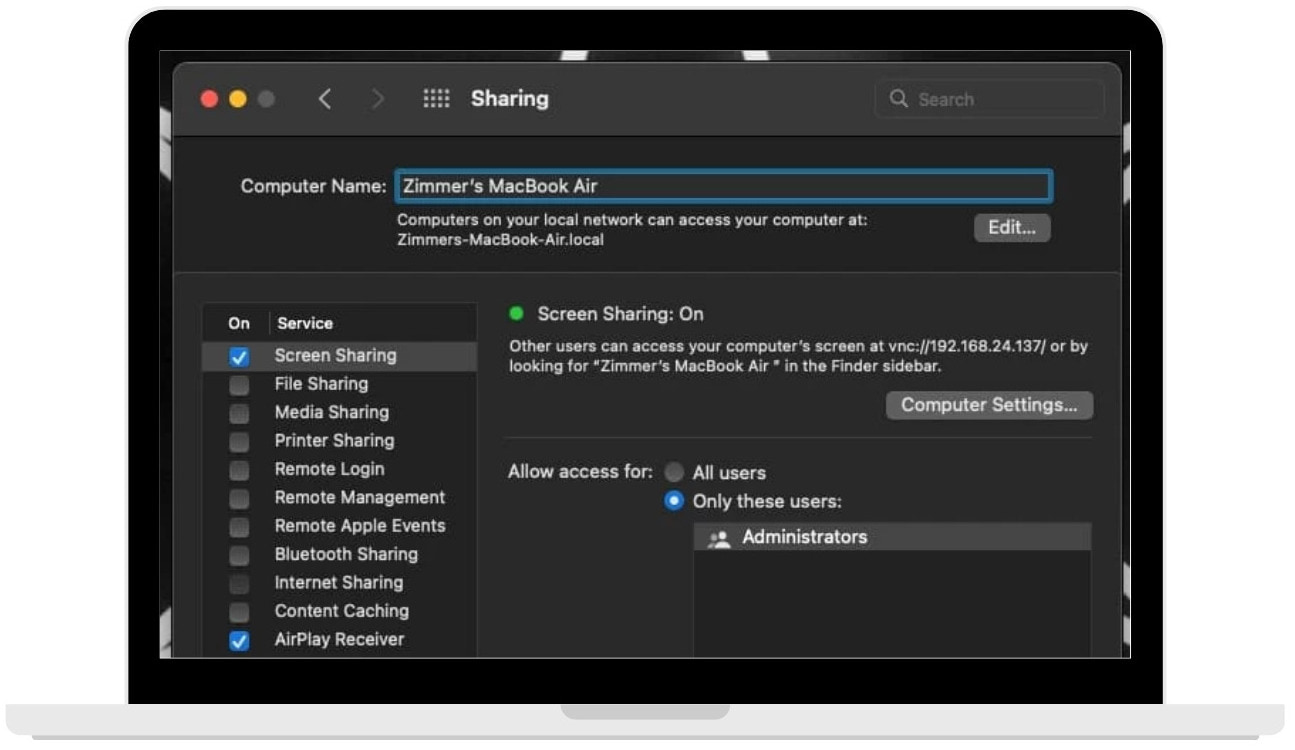
MacOS computers come with a built-in screen-sharing feature, acting as a basic VNC server for remote control. This integrated function is easily activated via the System Preferences, under the General tab and Sharing option, where users can enable Screen Sharing and other services like file and printer sharing.
For Mac-to-Mac connections, the process is user-friendly: simply access the Shared section in Finder, select the computer, and start screen sharing. For access from non-Mac devices or using alternative VNC clients, the IP address displayed is used, which is internal to enhance security within a local network.
☝ What we like:
The Screen Sharing setup includes a secure password creation option in the Computer Settings, adding a layer of security and preventing repetitive authorization requests for frequent use.
Overall, MacOS’s Screen Sharing provides a straightforward and secure method for remote desktop connections, eliminating the need for third-party RDP software.
Pros
- Integrated into MacOS;
- Secure local network connections
- Optional password for added security
- No need for third-party software
Cons
- Limited to basic remote control
- Restricted to internal IP access
5. HopToDesk
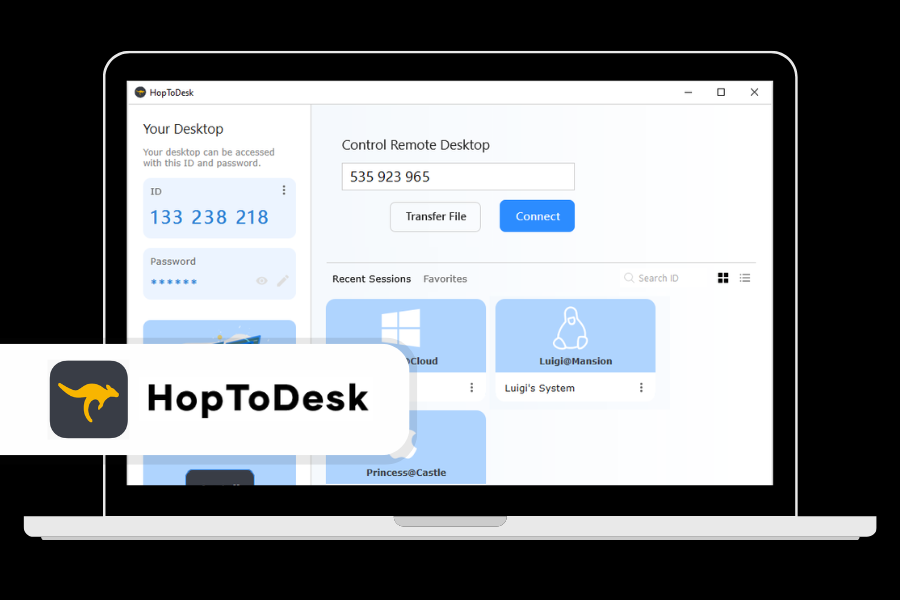
HopToDesk is a lightweight, cross-platform remote desktop solution that’s completely free for personal and business use. It offers an intuitive interface and robust features like screen sharing, file transfers, and live chat. Its end-to-end encryption ensures your sessions are secure, making it a great choice for users who prioritize privacy.
☝ What we like:
HopToDesk, like RustDesk which it was originally forked from, stands out for being completely free, making it accessible to both personal users and businesses. Simple setup and focus on secure, encrypted connections make it an appealing option for those looking for reliable remote support across platforms.
Pros
- Simple to set up and use.
- Secure connections with modern encryption.
- Comprehensive features, including chat and file transfers.
Cons
- Lacks advanced administrative tools for professional IT support.
- Limited customization options compared to some competitors.
6. FreeRDP
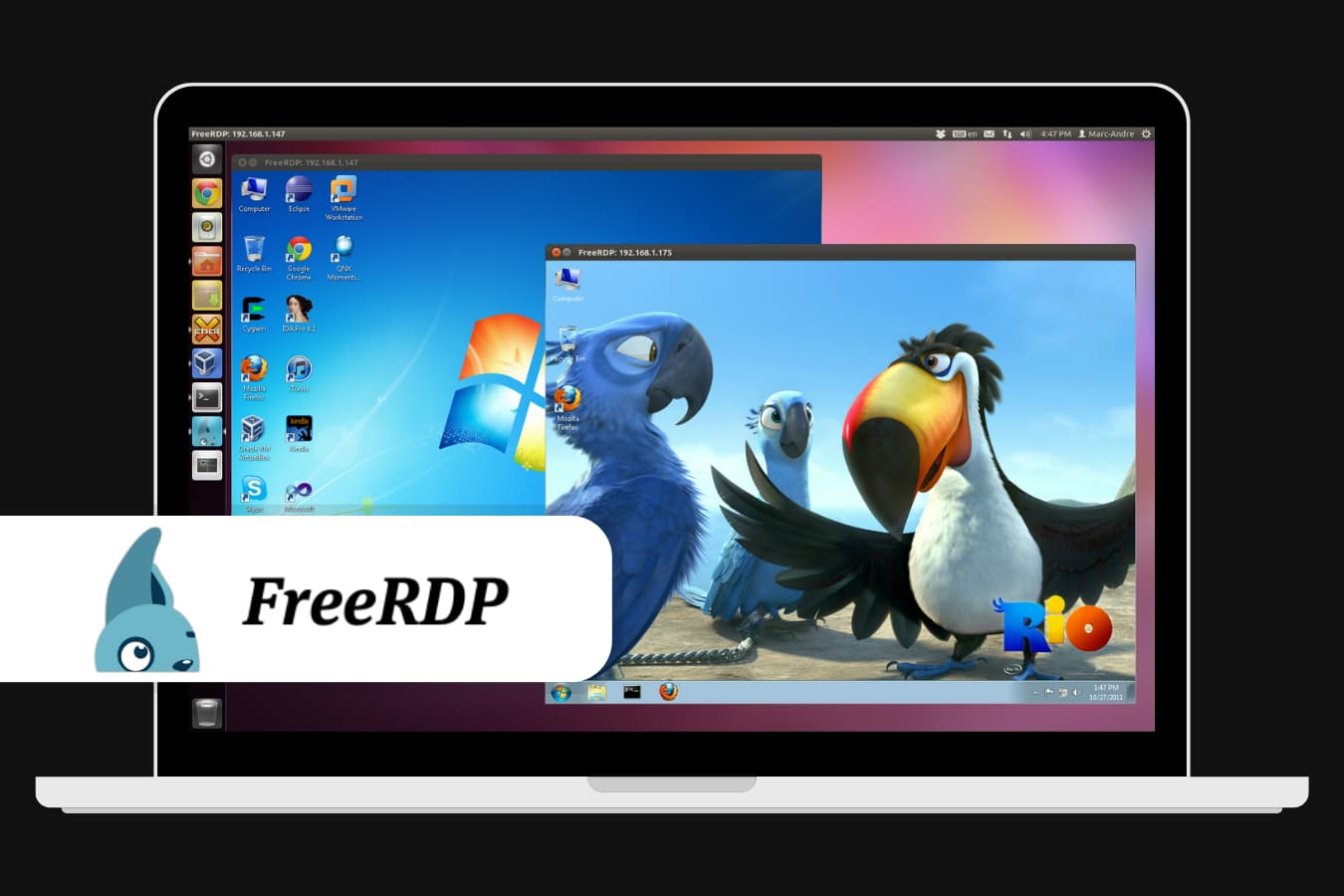
FreeRDP is an open-source implementation of the Remote Desktop Protocol (RDP) that’s free for macOS users. While it’s powerful and versatile, it’s best suited for users with some technical knowledge, as it primarily operates via the command line. FreeRDP is highly customizable, making it a favorite for developers and advanced users.
☝ What we like:
FreeRDP offers unparalleled flexibility for those who prefer open-source software and require advanced customization. Its ability to support RDP connections across platforms makes it an excellent choice for users who want full control over their remote desktop experience.
Pros
- Completely free and open-source.
- Highly flexible and customizable.
- Supports advanced features like network-level authentication.
Cons
- Command-line operation may be intimidating for beginners.
- Limited graphical user interface compared to other solutions.
Best free Mac remote desktop apps — at a glance
To make things easier for you, we have thoroughly examined the data obtained during our comprehensive evaluation of free remote desktop tools for MacOS.
| HelpWire | Microsoft Remote Desktop | Chrome Remote Desktop | Mac Screen Sharing | HopToDesk | FreeRDP | ||
| 1 | File Transfer | ✔️ | ✔️ | ✔️ | ✔️ | ✔️ | ❌ |
| 2 | Session Recording | ❌ | ✔️ | ❌ | ❌ | ❌ | ❌ |
| 3 | Multi Platform | ✔️ | ✔️ | ✔️ | ✔️ | ✔️ | ✔️ |
| 4 | Audio Support | ❌ | ✔️ | ❌ | ❌ | ✔️ | ✔️ |
| 5 | Session Transfer | ❌ | ❌ | ❌ | ❌ | ❌ | ❌ |
| 6 | Remote Printing | ❌ | ✔️ | ❌ | ❌ | ❌ | ❌ |
| 7 | USB Sharing | ❌ | ❌ | ❌ | ❌ | ❌ | ❌ |
| 8 | Mobile Access | ❌ | ✔️ | ✔️ | ❌ | ✔️ | ❌ |
| 9 | Live Chat | ✔️ | ❌ | ❌ | ❌ | ✔️ | ❌ |
| 10 | Our rating | ⭐️⭐️⭐️⭐️ | ⭐️⭐️⭐️ | ⭐️⭐️⭐️⭐️ | ⭐️⭐️ | ⭐️⭐️⭐️ | ⭐️⭐️⭐️ |
Top remote desktop software for Mac — Free for personal use only
- TeamViewer
- AnyDesk
- Splashtop Personal
- SupRemo
- NoMachine
- RustDesk
- Remote Desktop Manager by Devolutions
- DWService
These tools are free for personal use and come with powerful features for effective and easy remote access. Although, a paid license is usually required for business or professional use. We’ve compiled the best free remote desktop for Mac support solutions to help you choose the right one.
For a quick overview, skip the extensive overview and head straight to our comprehensive comparison table. Here, we’ve summarized all the key information about the best free remote desktop software options for work and business on Mac.
1. TeamViewer
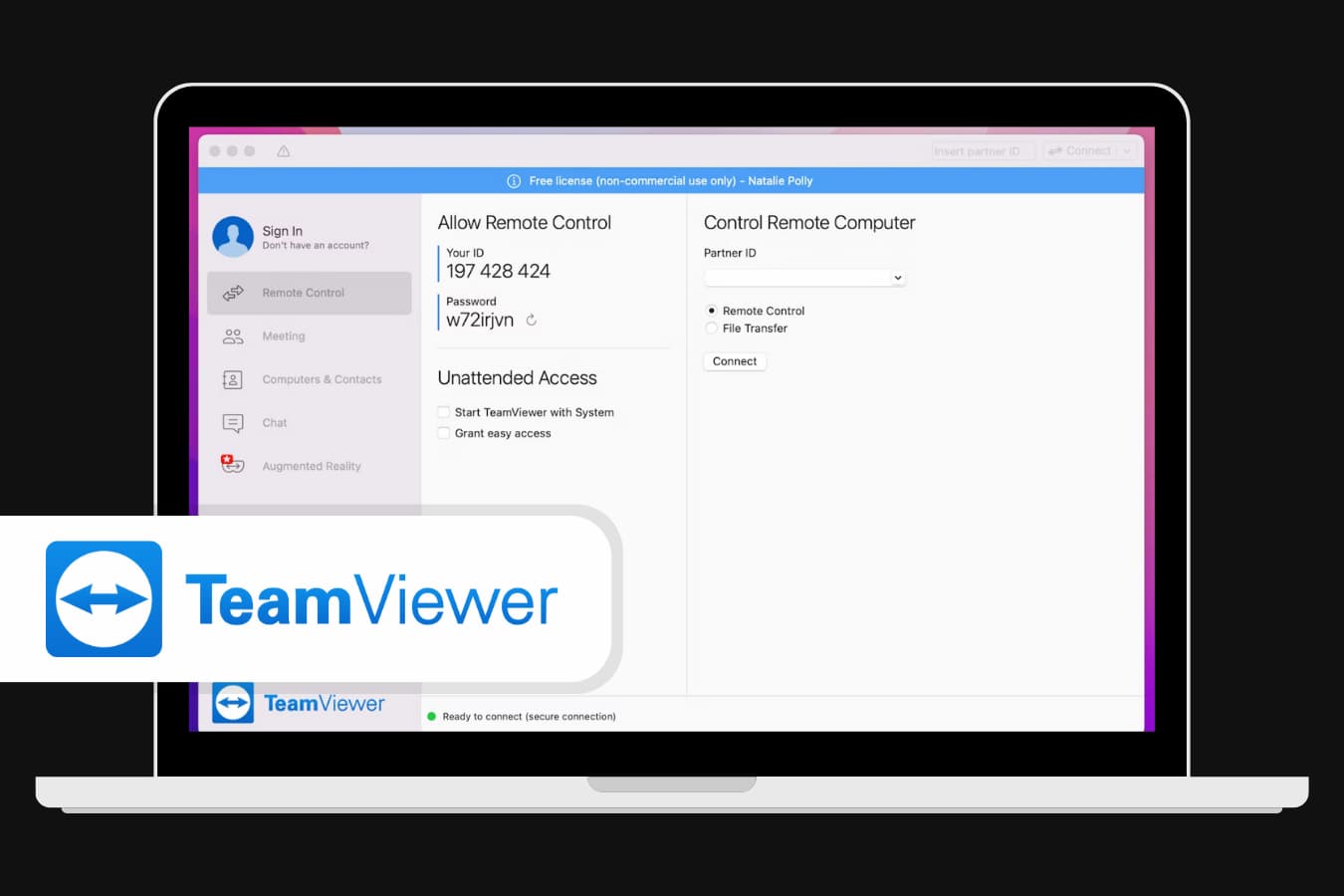
TeamViewer is one of the most popular free remote desktop Mac apps that works with all common systems. It’s available even for mobiles on Android and iOS. You can get remote access to your Mac from a Windows computer or your mobile and vice versa. You’ll get full device control, including file transfer, in-session automation, and remote printing.
☝ What we like:
TeamViewer has a user-friendly interface, so you’ll figure out how to use this application within minutes. Simply install TeamViewer on both devices and link them in the app. It’s free for personal usage, but business users should use one of the affordable paid membership options.
Price:
The Remote Access Plan starts at $24.90 for one user managing up to three unattended devices.
The Business Plan starts at $50.90 for one user managing up to 200 unattended devices.
The Premium Plan starts at $112.90 for managing up to 300 unattended devices.
The Corporate Plan starts at $229.90 for managing up to 500 unattended devices.
Pros
- Free for personal use;
- User-friendly interface;
- Multi-level security;
- Serves as both a remote access app and an online meeting platform.
Cons
- It has only basic features for free. If you want to have more advanced tools like VOIP or group sharing, consider switching to paid options;
- It’s almost impossible to share the screen while the PC is in sleep mode.
2. AnyDesk
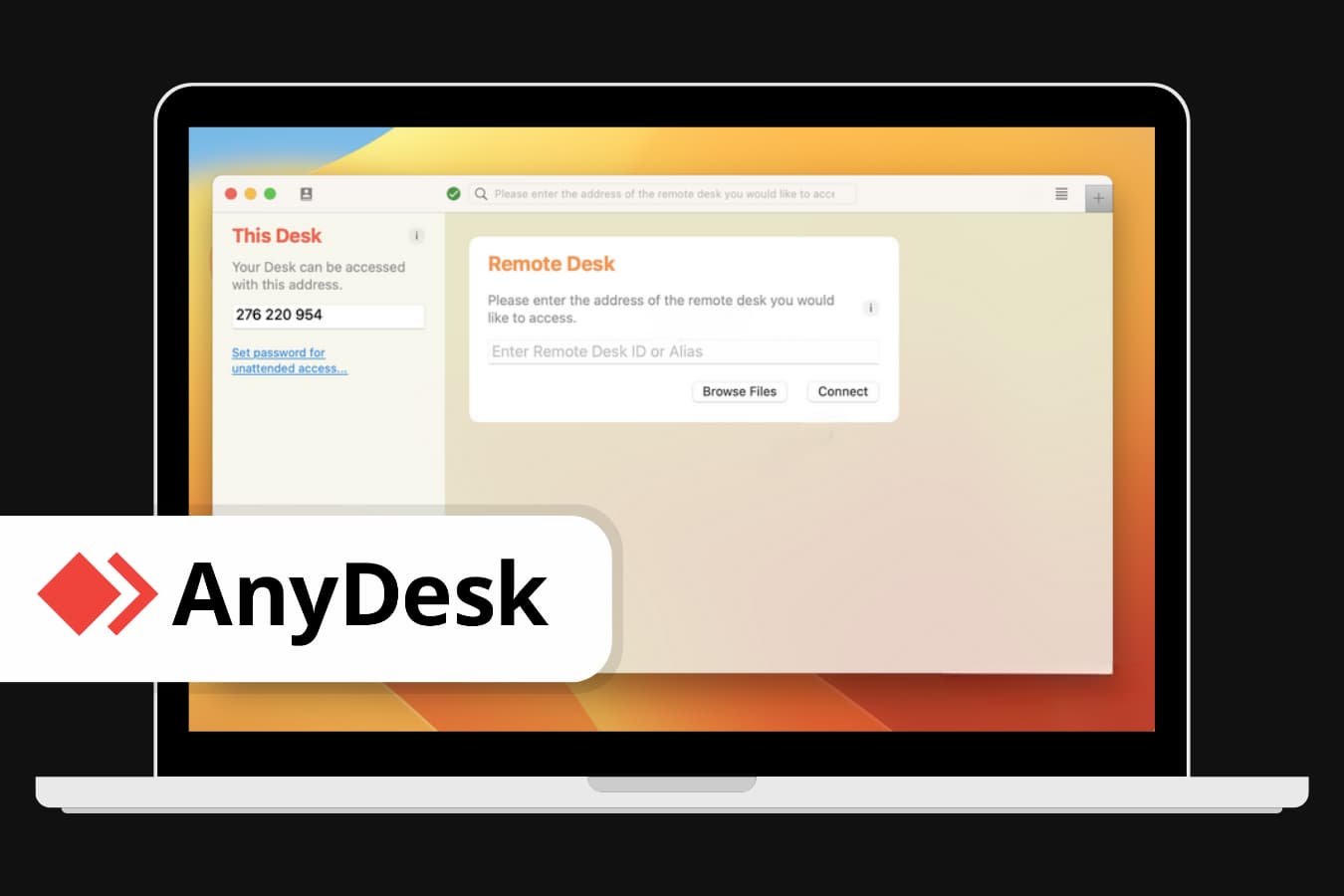
You can find this tool in any list of free remote desktops for Mac for a good reason. It’s a great tool that works on all common platforms. To launch the remote access, install AnyDesk on both devices, set login and password on the first (client) device, and share these credentials with the owner of the second device. Once they paste it, the client confirms the connection.
☝ What we like:
In the free version, you’ll get full remote assistance, including remote printing, address book, and file transfer. With a paid membership, you’ll get remote access, wake-on-LAN, custom branding, and more.
But even the basic version will be enough to do most remote tasks. That’s why this tool deserves its title as one of the best free remote desktops for Mac.
Price:
AnyDesk’s Solo Plan starts at $22.90/month for 1 licensed user with 3 login devices.
The Standard Plan starts at $35.90/month for 20 licensed users in a team.
The Advanced Plan starts at $79.90/month for 100 licensed users in a team.
The Ultimate Plan is available with custom pricing.
AnyDesk is free for personal use.
Pros
- Remote printing, file transfer, and address book;
- Doesn’t have time limits;
- Partially supports the command line interface;
- Mobile support and multiple device management.
Cons
- The mobile version is less user-friendly;
- Copy-paste inconveniences;
- Manual reconnection.
3. Splashtop Personal
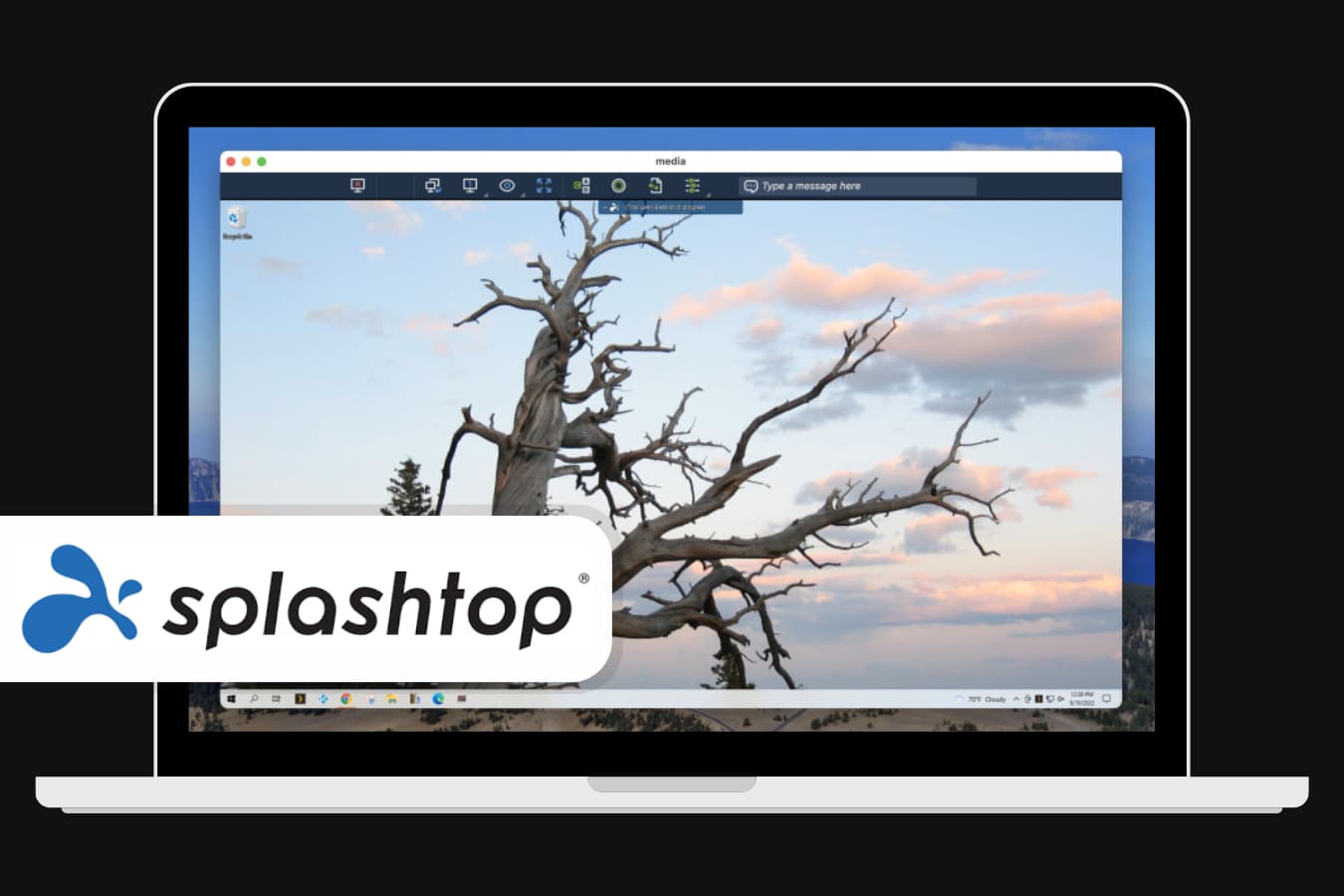
Reliable and efficient remote desktop solution for personal and business usage. Splashtop has 4 different products for different purposes.
Price:
Individuals and small teams will like Splashtop Business Access with three plans: Solo for 1 remote PC and $5/month, Pro for up to 10 computers under a single license only for $8,25/month, and Performance for $13/month.
They all have advanced security, and you can specify the access level of each team member. They all allow unlimited file transfer and remote printing.
☝ What we like:
Multi-monitor support in Pro and Performance plans allows you to spread each remote monitor into a separate window to arrange for your local setup. They also have wake-on-LAN and remote reboot features. Performance mode would be perfect for those who often work with photos, video, or music. It even has a microphone passthrough function, allowing you to seamlessly use recording software on the remote device.
Pros
- Secure connection;
- The ultra-high audio resolution, remote stylus, USB redirection, and mic passthrough in Performance mode;
- Wake-on-LAN and remote reboot;
- Sharing desktop via link.
Cons
- Complex installation process;
- You need to run Splashtop app on both devices;
- No monthly subscription, only annual plans.
4. SupRemo
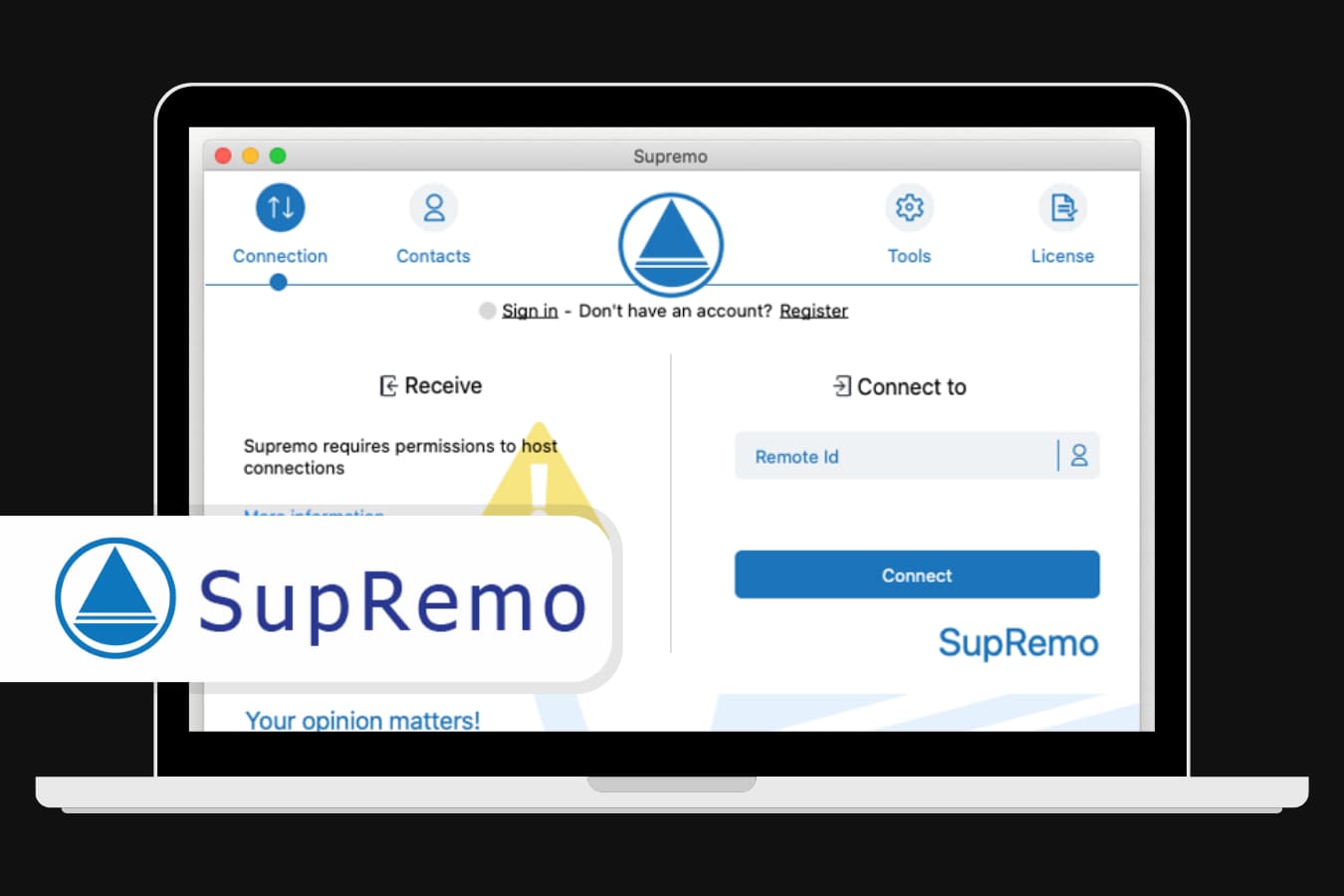
It is a very easy-to-use remote desktop app for all common desktop and mobile platforms, including MacOS and Linux. SupRemo has an unlimited number of enabled device users, remote endpoints, and address books in every plan. One thing worth noting is the number of concurrent connections.
☝ Take notice:
In the basic Solo plan, there is just one connection. In Business and Professional, you can have up to 100 concurrent sessions. It has multi-monitor support, chat, file transfer, and remote printing in each subscription. Pro users will get automatic and massive installation, license usage control, remote management, and device health monitoring.
Price:
SupRemo offers affordable plans. It starts with the Solo Plan, which costs $8/month for one concurrent connection.
The Business Plan is priced at $15/month and supports three concurrent connections.
The Professional Plan is $32/month and includes enhanced features for larger teams. Additional concurrent sessions are available for $5/month each. After the initial 21-day free trial, which doesn’t require registration or a subscription, Supremo can be used for free for non-professional or occasional use.
Pros
- Easy to install;
- Affordable pricing for professional use;
- Secure connections and an unlimited number of enabled devices;
- Great customization.
Cons
- Slow file transfer speed;
- No monthly subscription, you need to buy a yearly membership.
5. NoMachine
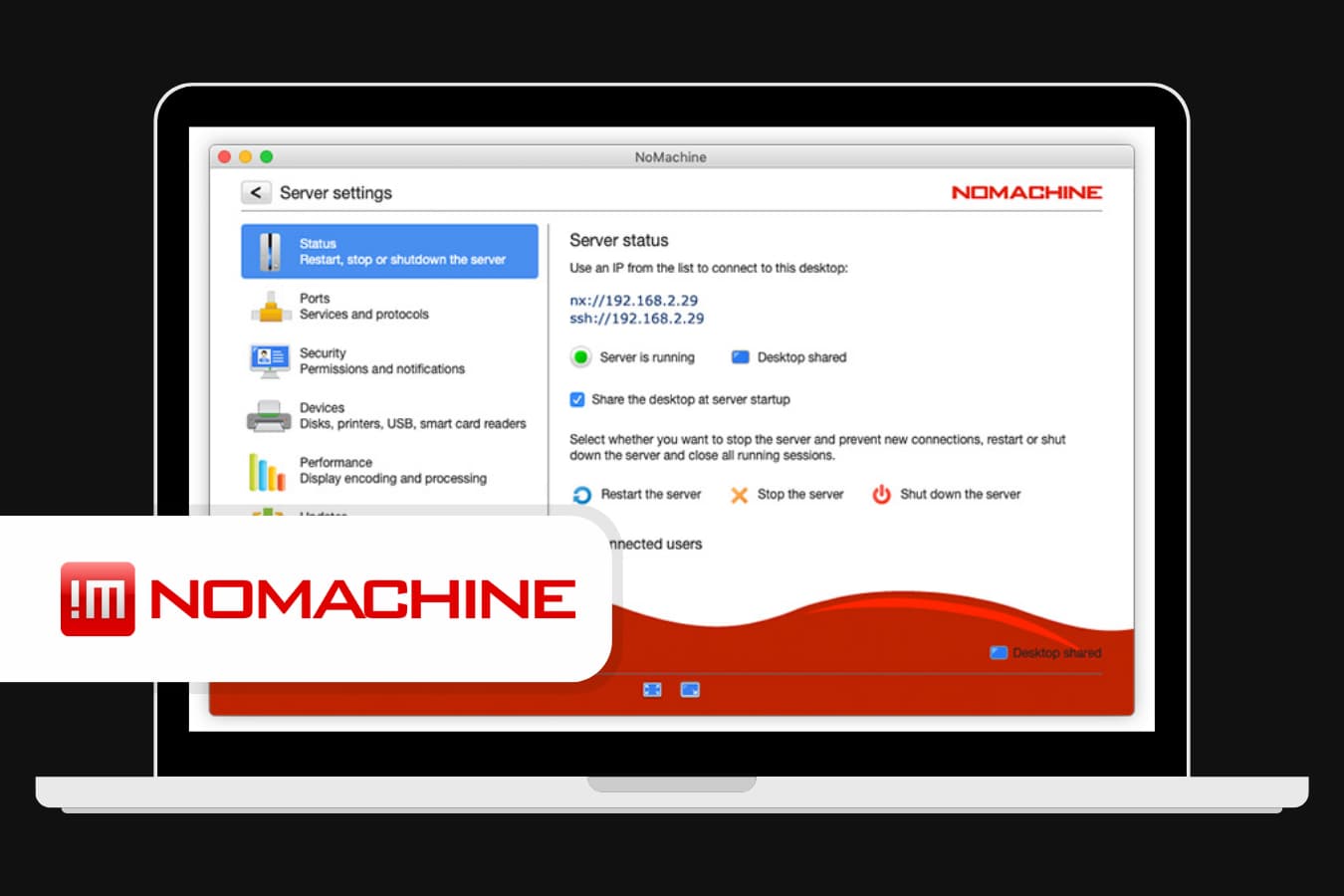
NoMachine is a great remote desktop solution that works with computers, phones, and servers. It has full multi-media support and user-friendly file sharing and remote printing interfaces. Guest sharing allows you to authorize guests to access in one click. With browser access, you can operate a remote computer from your favorite web browser.
☝ What we like:
The screen recording feature is available in any plan, including non-commercial free. You can even turn on the automatic session recording, so you don’t need to do it manually anytime you join the remote session.
Price:
This application is free for basic personal purposes. It has more advanced business plans for big teams, terminals, and cloud servers. Their prices range from $44.50 to almost $4500 per year. However, if you are looking for a basic remote solution, the free version suits your needs.
Pros
- Free for personal and small business usage;
- Session recording in the freemium version;
- Video and audio streaming capabilities.
Cons
- Live customer support is available in paid memberships and a paid subscription only;
- High price for a business-related membership.
6. RustDesk
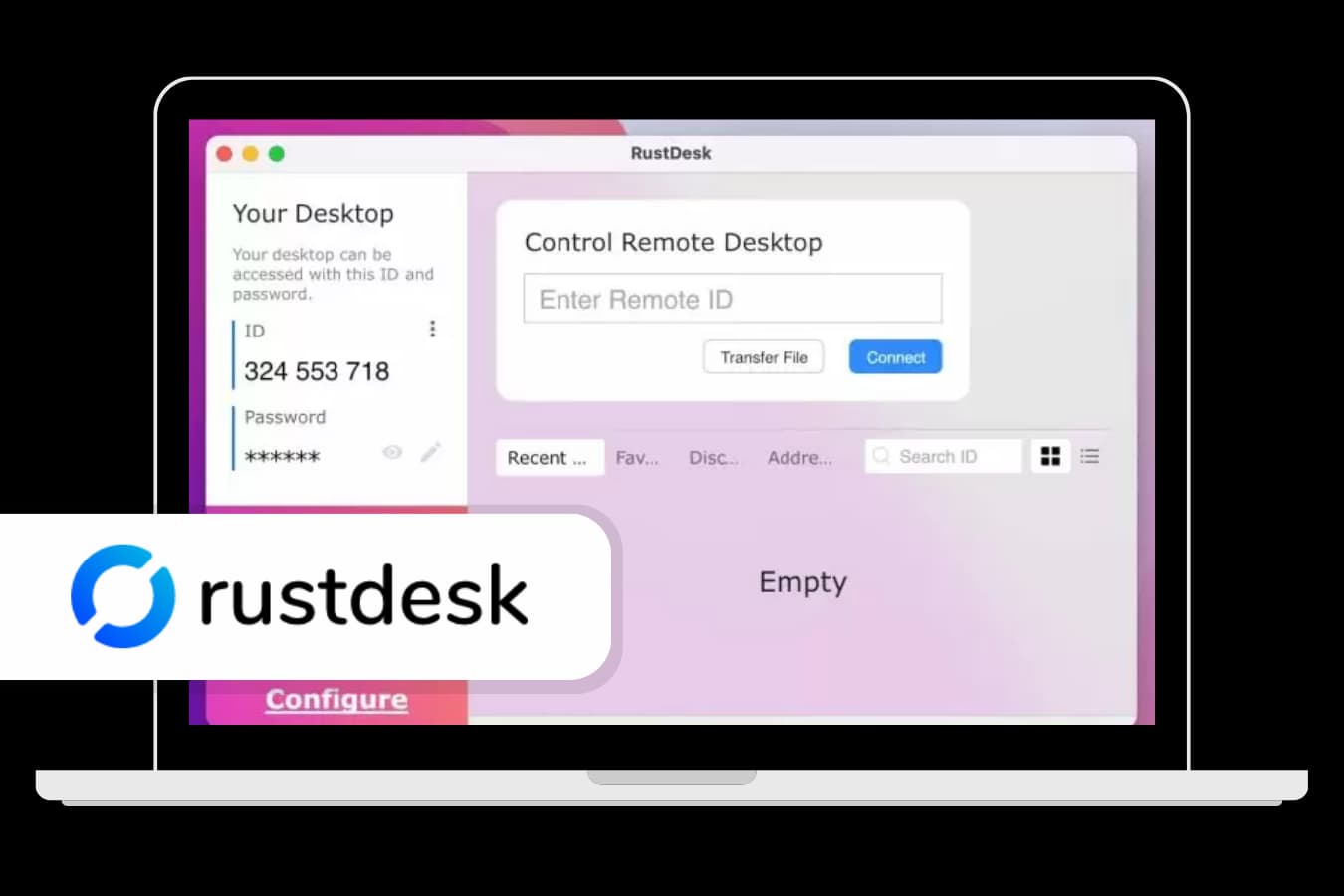
RustDesk is a powerful remote desktop software for mac that’s free for personal use and provides self-hosted deployment for enhanced privacy. With its friendly user-interface and cross-platform support, it’s ideal for those seeking secure, flexible remote access without any subscription fee. With RustDesk, you can host your own server, ensuring complete data privacy.
☝ What we like:
RustDesk is a free mac remote desktop that gives you full control over your remote desktop environment, particularly with its self-hosted option. It stands out in the remote desktop space by offering a simple design combined with robust privacy features, and is free for personal use.
Price:
RustDesk offers paid self-hosting plans. The Individual Plan starts at $9.90/month (billed annually), which supports one user, up to 20 devices, unlimited connections, 2FA, a web console, and centralized settings.
The Basic Plan starts at $19.90/month and includes all Individual Plan features, plus support for 10 users, up to 100 devices, SSO, LDAP integration, and a custom client generator.
The Customized Plan starts at $19.90/month, with an additional $1 per user and $0.10 per device.
Pros
- Free for personal use.
- Self-hosting option guarantees full data privacy.
- Compatible with Windows, macOS, Linux, Android, and iOS.
- Supports clipboard synchronization and file transfer.
Cons
- Requires self-hosting setup for full privacy.
- No advanced enterprise features in the free version.
7. Remote Desktop Manager by Devolutions
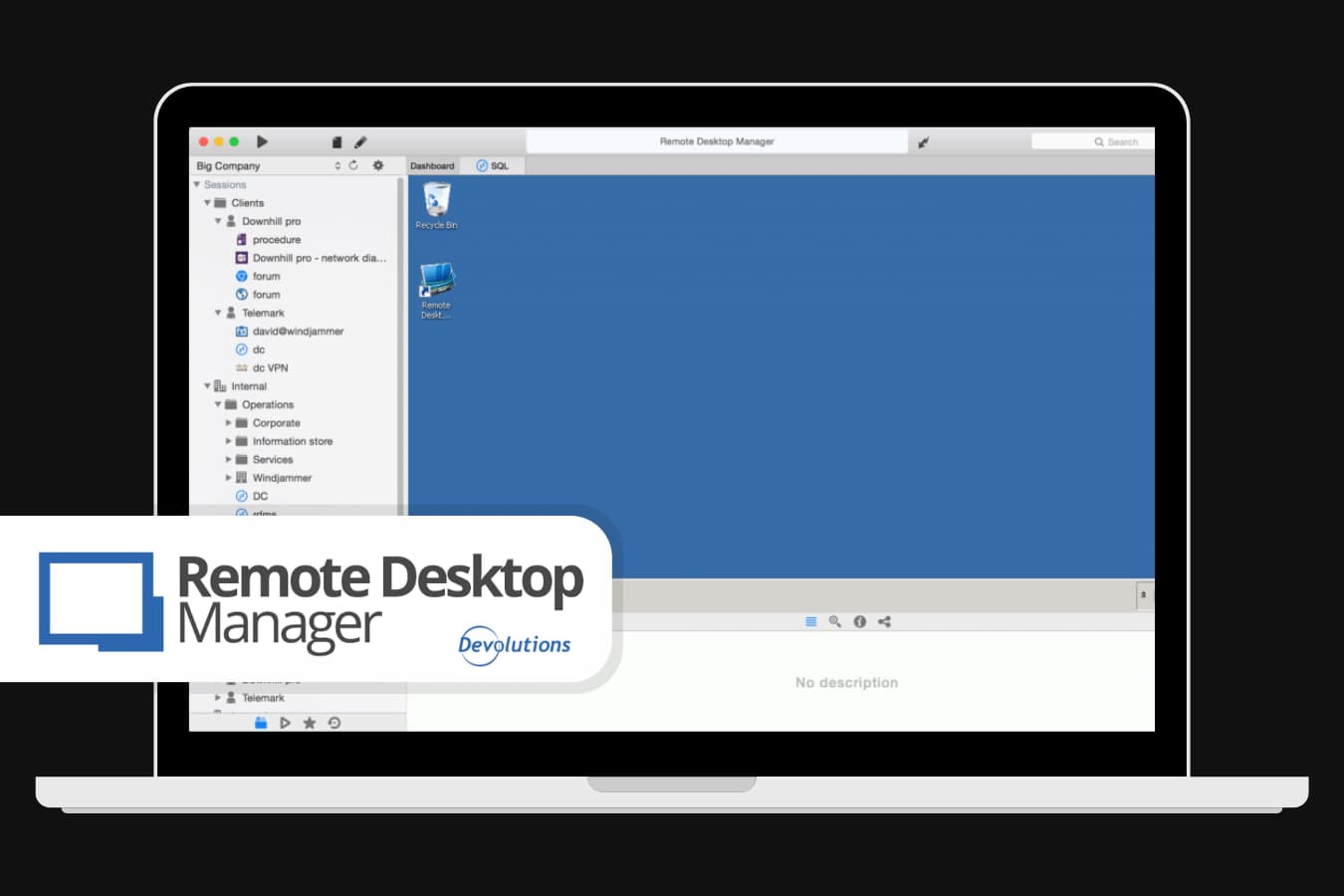
It is a tool that allows you to set up and manage multiple remote connections simultaneously in the free version. It also gives you a full password manager via shared password vaults.
Administrative password sharing permits all admins to securely manage shared accounts and passwords. Private user vaults securely store the private credentials of every user. So, Remote Desktop Manager by Devolutions will be one of the best free remote desktop software for Macs for households with at least one shared computer for the family. This usually happens when younger generations want to teach their elderly relatives basic computer skills.
☝Price:
It is free for personal use. The Enterprise Plan starts at $199.99 annually per user and includes role-based access control, shared password vaults, and two-factor authentication. Plus, there are discounts available for teams.
Pros
- Advanced password management;
- Supports multiple operating systems;
- Macros support;
- Remote connection to servers.
Cons
- Developers don’t promote tool features, so you should read the documentation to find all the perks of the free and paid version;
- You have to reconnect manually.
8. DWService
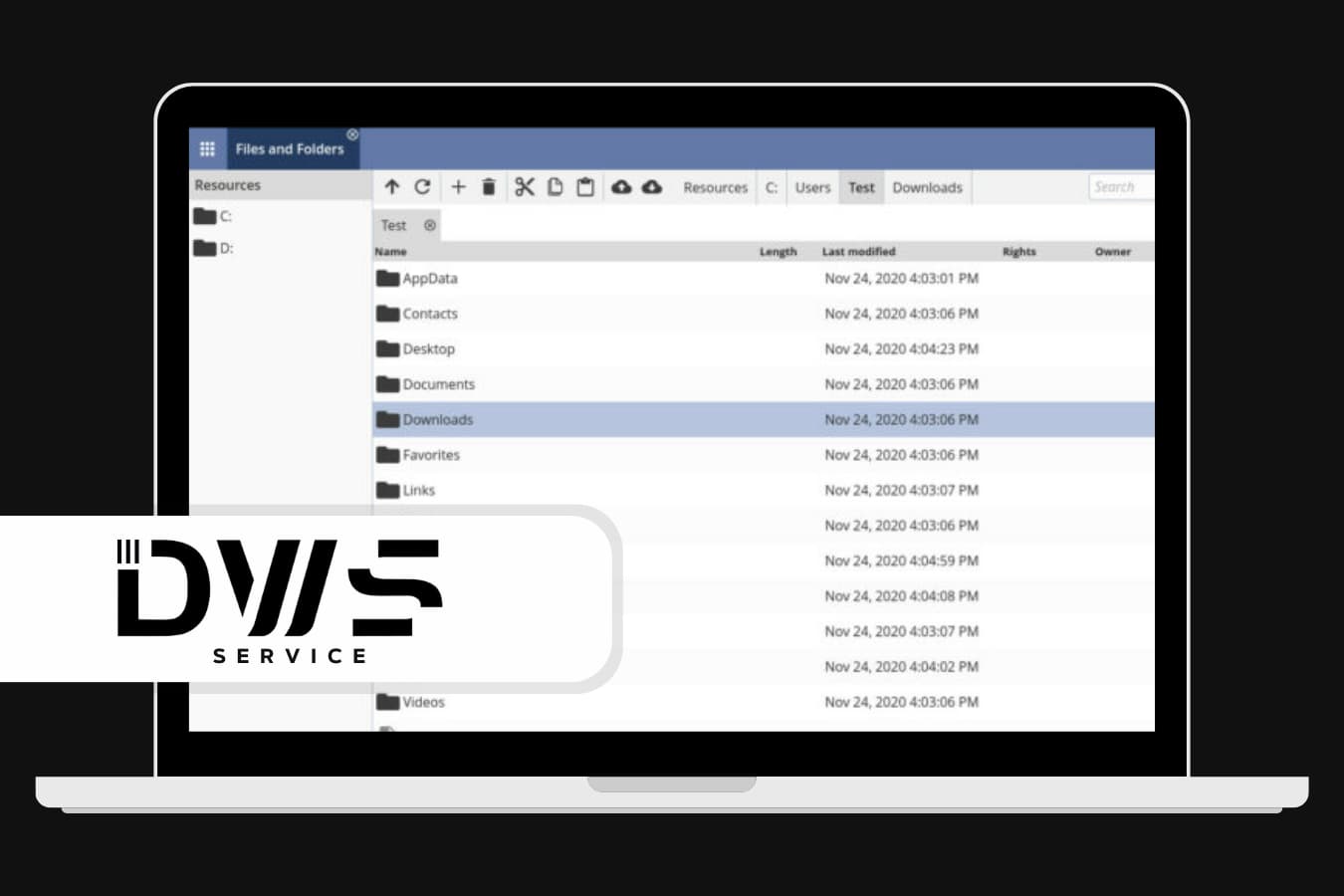
It’s an open-source application for computers and mobiles. Moreover, you can access other computers from the browser, which makes DWServise one of the best free Mac remote desktop solutions.
You just need to have the app on the client’s device and share credentials (login and password) with another user. Later, they can enter it on the app or the DWService website. The second user will get the same features and access level in both situations.
Price:
DWService is free with 6 Mbps bandwidth. The paid plans start at $4 monthly for 8 Mbps and go up to $120 monthly for 50 Mbps, offering scalable bandwidth options for professional needs.
Pros
- Work both in the app and the browser versions;
- Supports file transfers.
Cons
- Have poor bandwidth in the free version.
Quick look — best remote desktop apps for business for Mac
Following an in-depth analysis of various remote desktop software for business on Mac, we have compiled a significant amount of valuable insights and data. Presented below is a summarized account of the major findings resulting from our comprehensive examination
| TeamViewer | Anydesk | Splashtop | Supremo | NoMachine | RustDesk | Remote Desktop Manager | DWService
| ||
| 1 | File Transfer | ✔️ | ✔️ | ✔️ | ✔️ | ✔️ | ✔️ | ✔️ | ✔️ |
| 2 | Session Recording | ✔️ | ✔️ | ✔️ | ✔️ | ✔️ | ❌ | ✔️ | ✔️ |
| 3 | Multi Platform | ✔️ | ✔️ | ✔️ | ✔️ | ✔️ | ✔️ | ✔️ | ✔️ |
| 4 | Audio Support | ✔️ | ✔️ | ✔️ | ❌ | ✔️ | ✔️ | ✔️ | ✔️ |
| 5 | Session Transfer | ✔️ | ✔️ | ❌ | ❌ | ❌ | ❌ | ✔️ | ✔️ |
| 6 | Remote Printing | ✔️ | ✔️ | ✔️ | ✔️ | ✔️ | ❌ | ❌ | ✔️ |
| 7 | USB Sharing | ✔️ | ❌ | ❌ | ❌ | ✔️ | ❌ | ❌ | ❌ |
| 8 | Mobile Access | ✔️ | ✔️ | ✔️ | ✔️ | ✔️ | ✔️ | ✔️ | ✔️ |
| 9 | Live Chat | ✔️ | ✔️ | ✔️ | ✔️ | ✔️ | ❌ | ❌ | ❌ |
| 10 | Our rating | ⭐️⭐️⭐️⭐️ | ⭐️⭐️⭐️⭐️⭐️ | ⭐️⭐️⭐️ | ⭐️⭐️⭐️⭐️ | ⭐️⭐️⭐️⭐️ | ⭐️⭐️⭐️⭐️ | ⭐️⭐️⭐️ | ⭐️⭐️⭐️ |
Key criteria for selecting the ideal free Mac remote desktop software
When choosing remote desktop software for Mac, it’s important to have clear criteria for selection, considering a vast array of options that differ in functionality and are either fully or partially paid.
- OS Compatibility. Ensure the software is compatible with your Mac’s operating system. If you need to access a Windows environment from MacOS, tools like Apple Remote Desktop may not be suitable. Also, if you require cross-platform access, such as for Android devices, verify that the software supports these platforms.
- Ease of Use and User Interface. The software’s user interface should be intuitive for efficient operation. Review user feedback, particularly video reviews on platforms like YouTube, to understand the user experience of different tools.
- Performance and Functionality. Check the software’s performance, focusing on responsiveness and screen sharing quality. Assess if it meets your specific needs, such as file transfer, multi-session handling, or high-resolution screen display. Strive for a balance between functionality and cost, choosing a tool that fulfills most of your requirements at a fair price.
- Security Features. Prioritize software with strong security measures, including end-to-end encryption, secure login processes, and two-factor authentication options, given the sensitive nature of remote access.
- Cost and Pricing Model. Evaluate the software’s cost against your budget. Options include one-time purchases, subscription models, and free versions, which might have limitations.
By carefully considering these criteria, you can make an informed decision and select Mac remote desktop software that best suits your specific needs and usage patterns.
Wrapping up
As you see, there are many free and paid remote desktop tools for MacOS. While choosing, take a closer look at suitable systems and the price of the selected tool. You can find many free or affordable apps that have the same features as the expensive ones.
We recommend you test a trial version at least in 2-3 tools to find what application will suit you more. Look for a tool that supports as many OSs as possible. Everything in our world is constantly changing, and maybe tomorrow you will need a remote control for a different system, so it would be better to soften the blow and choose a multi-OS tool in advance.